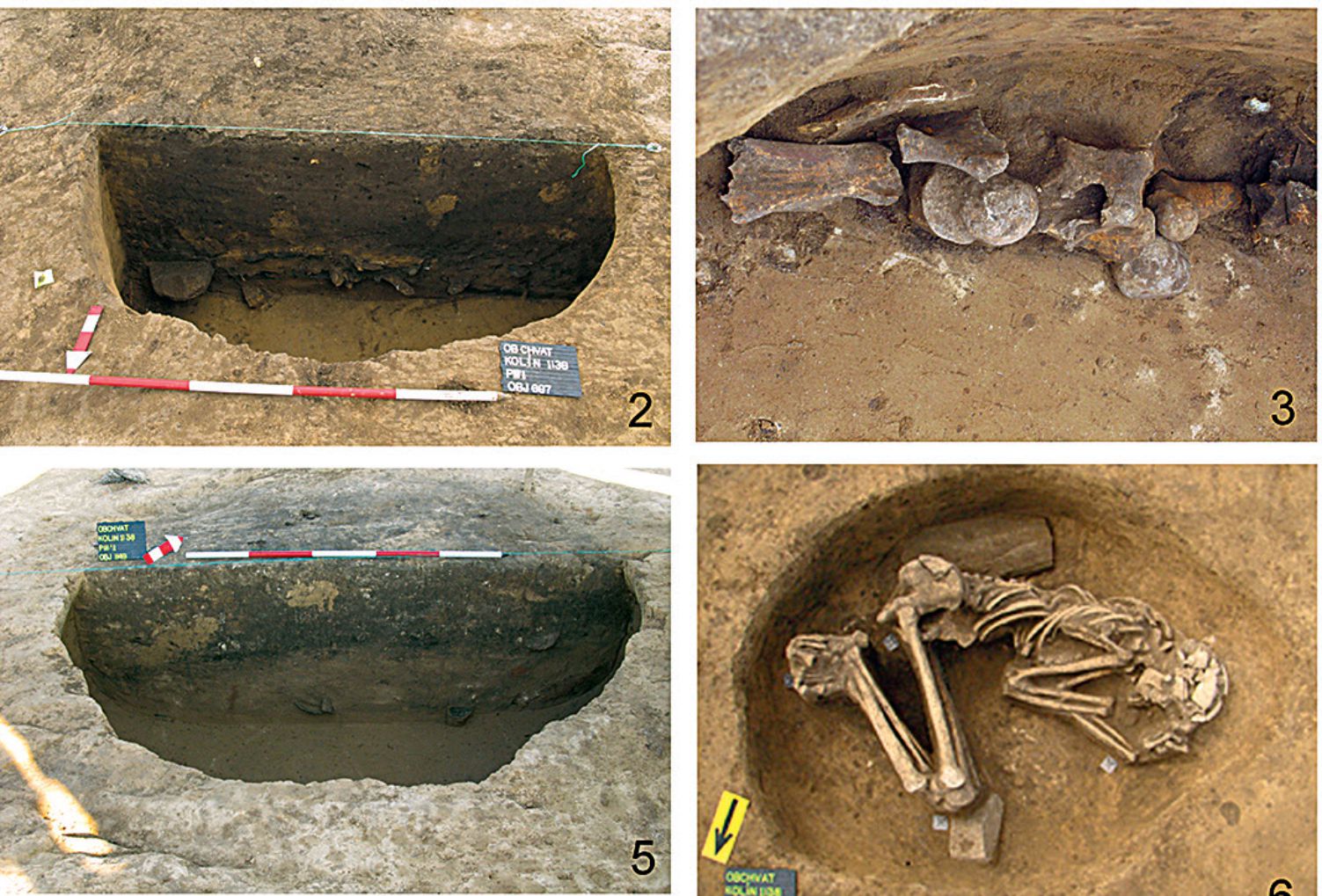The early part of the early (Baalberge) stage of the Funnel Beaker culture in east Bohemia
the settlement in Štítary
DOI:
https://doi.org/10.35686/AR.2019.9Keywords:
Early Eneolithic, Funnel Beaker culture, Baalberge stage, periodisation, settlement areal, animal bonesAbstract
During the excavation of a multicultural site near Štítary in the Kolín district, central Bohemia, in 2008, part of a Funnel Beaker culture (FBC) settlement area was uncovered: 15 features, most of them storage pits, one of which contained an inhumation burial, another a domed kiln. An analysis of find units from the storage pits supplemented with two assemblages from east Bohemia Úhřetice presented a clearly defined find group whose composition corresponds to the earliest part of the Baalberge stage (phase Ila of the Moravian FBC). The identification of the distinct “Štítary” phase of the FBC in the eastern part of Bohemia significantly alters the existing notion of the situation in the country at the beginning of the Early Eneolithic. This phase is closely linked to the environment of the Moravian FBC, and unlike the domestic Bohemian group of this culture, it is completely lacking features reminiscent of Michelsberg culture pottery. Its discovery also indicated the division of the settled territory of the Bohemian FBC group into two parts: the eastern part with early Baalberge sites similar to the Moravian FBC, and the western part, where the settlement of the Baalberge stage has a somewhat different, more austere character influenced by the Michelsberg culture, making it more similar to the central German group of the FBC. The assemblage of animal bones from Štítary suggests subsistence based on domesticated animals, with a predominance of cattle. A similarity to the Moravian Baalberge can be seen in the particularly low share of hunted game and the somewhat higher share of sheep/goats. The frequent occurrence of partial or even intact animal skeletons of dogs, pigs and hares is a peculiarity.
Downloads












